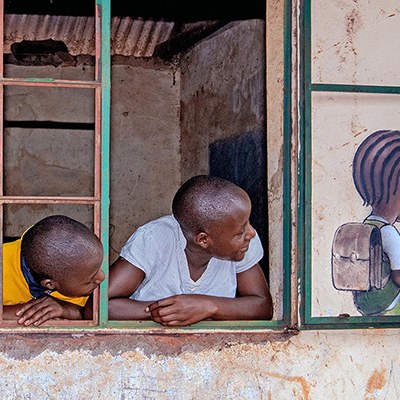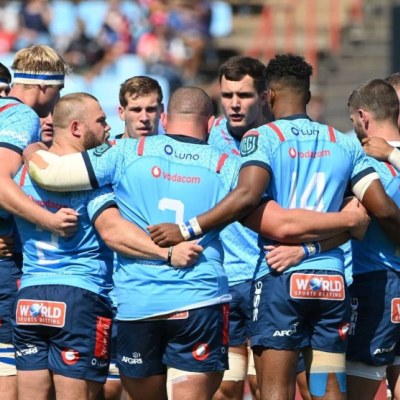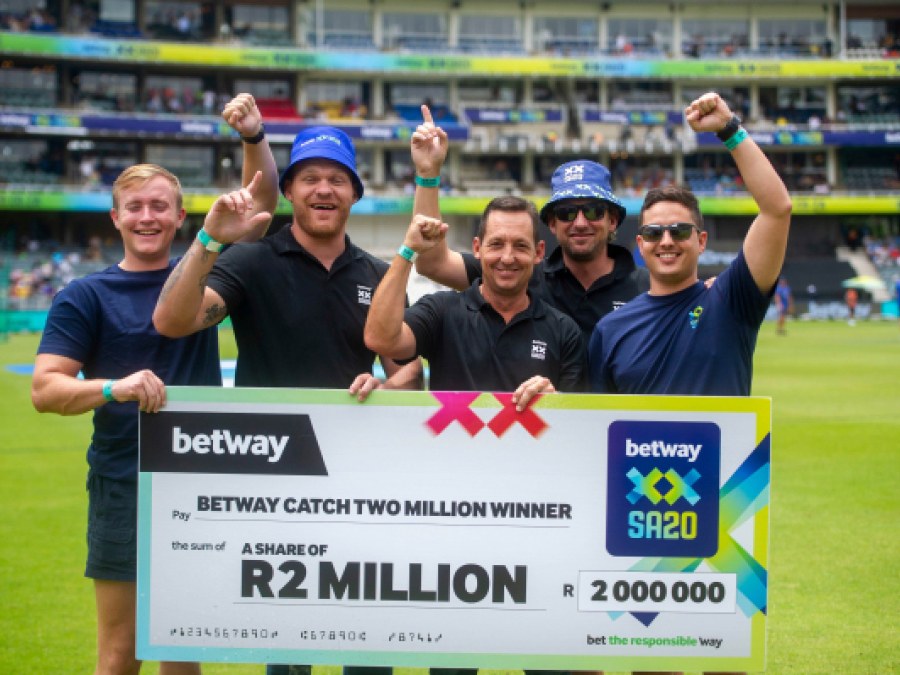
-
Category
-
Submitted By
-
19Dec, 2023
Mark your calendars for January 10, 2024, as the highly anticipated return of Betway SA20 draws closer, promising a thrilling showcase of top-notch cricketing action. With Betway back as the title sponsor, the renowned sports betting and entertainment brand is all set to escalate the excitement with the revival of the Betway Catch R2 Million campaign.
Hailed as an unprecedented success in Season 1, the Betway Catch R2 Million campaign captured the imagination of fans, granting numerous lucky spectators a slice of the R2 million prize pool by catching a one-handed clean six during the exhilarating Betway SA20 matches.
Assembling some of the world's finest batsmen, South Africa's premier T20 cricket league is geared up to ignite Season 2, offering fans in the stands a significantly increased opportunity to net the life-changing catch.
Beyond the enthralling on-field clashes, match attendees are in for an amplified stadium experience, merging world-class cricket with stellar performances by top South African entertainment artists.
Graeme Smith, the Betway SA20 League Commissioner, emphasized the paramount importance of elevating fan engagement for the league's second edition. "Fan engagement is crucial for any spectacular sporting event, and the Betway Catch R2 Million competition epitomizes this," remarked Smith. "The excitement it generated among fans in Season 1 was unparalleled. Witnessing the fervor spread across stadiums and beyond was incredible, and having it return for Season 2 adds an extra layer of thrill to the game. It offers fans a unique chance to actively participate and vie for a life-altering reward. I'm excited to witness the catching action this season."
Mark Rowles, Betway's Head of Marketing, expressed eagerness at Betway's role in driving innovative initiatives that resonate with the brand's fervor for sports and fan involvement. "As proud sponsors of Betway SA20, we're thrilled to build on the triumph of the inaugural edition," Rowles shared. "The success of the Betway Catch R2 Million campaign in engaging fans at stadiums and viewers at home was remarkable. Bringing it back for Season 2 amplifies the excitement. We encourage fans to join in and increase their chances of winning big by registering a Betway account. Alongside the Catch R2 Million campaign, we're launching an exciting new promotion called 'Game of Zones' during the opening fixture week."
For Betway customers nationwide unable to attend matches, a thrilling opportunity awaits. They can predict the specific stadium zone where a clean, one-handed catch will be taken. Correct predictions offer customers a chance to win the same amount as live catch winners in the stadium.
Continuing the tradition from the previous season, Betway account holders stand to double their winnings if they catch a one-handed clean catch during the matches.
The Betway SA20 extravaganza spans from January 10 to February 10, 2024, across Cape Town, Pretoria, Durban, Gqeberha, Johannesburg, and Paarl. Kicking off the action at St George's Park in Gqeberha, defending champions Sunrisers Eastern Cape will face off against Joburg Super Kings on January 10. Tickets for these exhilarating matches are available at www.SA20.co.za. Gear up for an unforgettable T20 cricket experience!
[Submitted by Kevin Rademeyer]
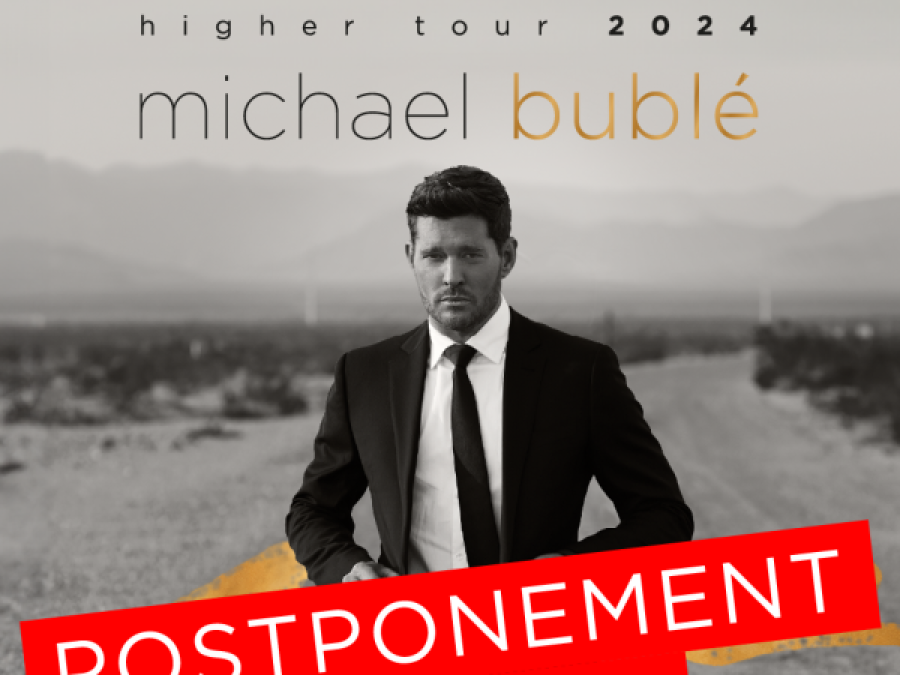
-
Category
-
Submitted By
-
19Dec, 2023
Big Concerts, in a joint effort with Michael Bublé and his team, made a major announcement today regarding the highly-anticipated "Higher Tour." Originally set for 2024, the tour has been postponed, marking a difficult but thoughtful decision aimed at granting Michael a well-deserved break from his demanding tour schedule.
The captivating "Higher Tour" is now rescheduled to enthral South African audiences in 2025. This hiatus is not just a breather but a chance for Michael to invest precious moments with his family and reignite his creative spark, ensuring an unparalleled musical experience that South Africans have been eagerly anticipating.
We're committed to keeping South African fans in the loop throughout the upcoming year. Expect to be fully engaged and informed about all updates regarding the rescheduled tour. And the excitement peaks as we await the unveiling of the brand new 2025 tour dates, promising an unforgettable journey into the world of Michael Bublé's music.
Michael Bublé and Big Concerts extend heartfelt gratitude to their South African fans for their unwavering support and understanding. The anticipation for the "Higher Tour" in 2025 is brewing, and rest assured, it will absolutely be worth every moment of the wait. Get ready to join us as we anticipate an extraordinary musical odyssey with Michael Bublé. Stay tuned for more updates!
[Submitted by Kevin Rademeyer]
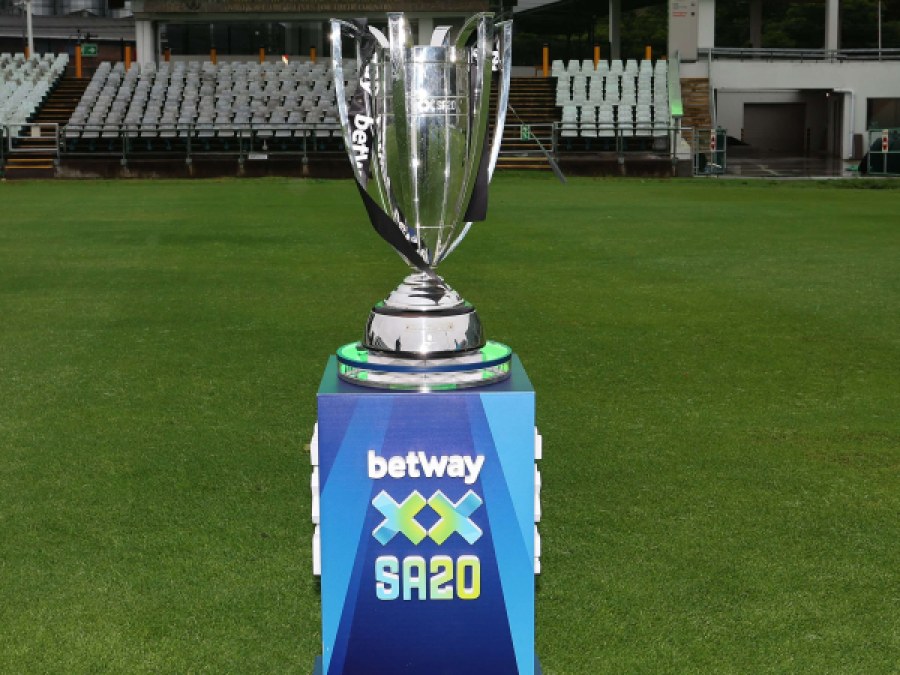
-
Category
-
Submitted By
-
19Dec, 2023
As the countdown to the exhilarating Betway SA20 Season 2 kick-off begins, SuperSport is gearing up to deliver an electrifying viewing experience that promises to redefine the cricket-watching landscape. Set to commence on January 10, 2024, at St George's Park in Gqeberha, Season 2 is all set to surpass its successful debut with a multitude of innovations and immersive elements.
Anticipating an explosive start following its inaugural triumph, SuperSport, in collaboration with its partners, is geared up to introduce a series of pioneering innovations. These advancements are meticulously designed to enthrall television audiences and fans, elevating their viewing encounters to uncharted realms of excitement and engagement.
Picture this: the Com Cam, offering a fixed view of the commentary box, boasting renowned former international cricketers delivering expert analysis. But that's not all. SuperSport's innovative blend of match-day and on-screen experiences includes the Dug Out, a boundary-level camera bridging the gap between viewers and players/coaches near the ropes. Not forgetting the iconic Couch, where commentators, fans, and celebrities converge, creating an interactive cricket-watching extravaganza.
However, SuperSport isn't just aiming for the stands. They're bringing the stadium experience right to your living room. Match Official technology will grant viewers a peek into the live communication among umpires during matches - an unprecedented facet for Betway SA20. Notably, audiences won't just hear the third umpire but also the on-field umpires' direct exchanges.
Rendani Ramovha, CEO of SuperSport, expressed sheer delight at the prospect of sharing unparalleled experiences with both stadium attendees and viewers alike. "SuperSport is upping the ante from Season 1 to match the pulsating action of Betway SA20. Whether you're tuned in via DStv Stream or Premium, we're ensuring an enthralling experience, rivaling the excitement of being at the venue itself," said Ramovha.
In a summer brimming with cricketing excitement, SuperSport is all set to offer live on-field player tracking, gamified player-naming features, and the revolutionary BuggyQam - a mobile camera placing viewers right amidst the cricketing action.
Moreover, the inclusion of animations featuring the iconic Big 5 wildlife adds a uniquely South African flavor to the League. Expect amusing illustrations of dismissals, fours, and sixes, amplifying the viewer experience.
League Commissioner Graeme Smith echoed the sentiments, emphasizing the joint efforts of Betway SA20 and SuperSport in elevating viewer engagement and connection. "Innovation is at our core, and we aim to redefine cricket viewing while fostering an immersive platform for fans. Whether you're at home or in the stadium, brace yourself for an unforgettable experience," stated Smith.
SuperSport is breaking barriers further by offering match commentary in three official South African languages: English, Afrikaans, and isiXhosa, ensuring inclusivity and accessibility for diverse viewers.
Get ready for a cricket season that transcends boundaries - an immersive, exhilarating spectacle that promises to captivate audiences like never before.
[Submitted by Kevin Rademeyer]
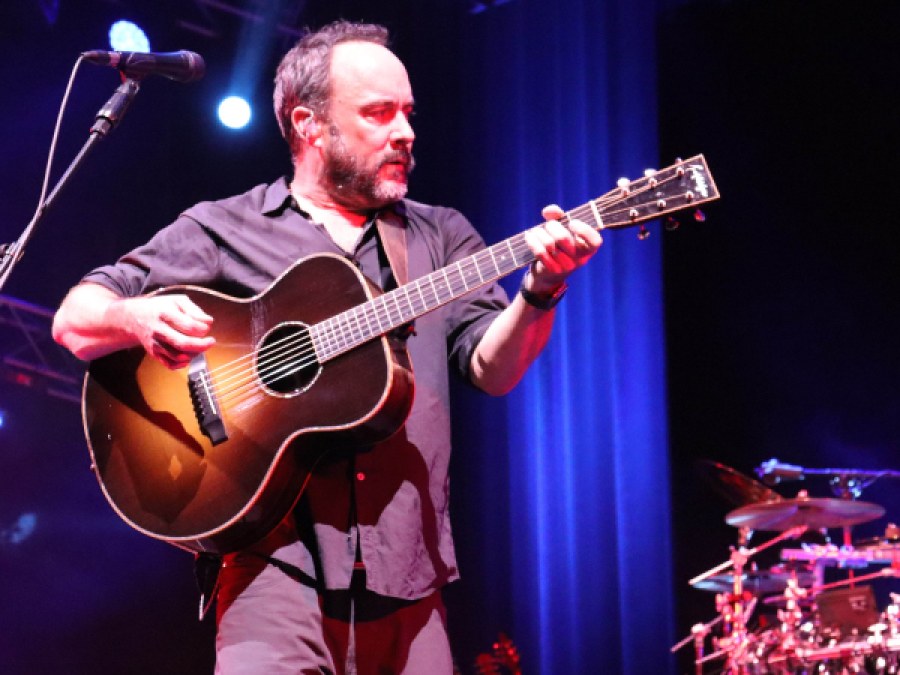
-
Category
-
Submitted By
-
12Dec, 2023
In a triumphant revival reminiscent of a prodigal son's return, Dave Matthews Band shattered a ten-year hiatus in spectacular fashion at the Sunbet Arena in Pretoria this past Sunday. While the band's performances in the Republic have been infrequent, their recent show proved worth the wait, leaving audiences spellbound with a musical extravaganza spanning over three electrifying hours.
Seemingly lured by the festive season and perhaps drawn by connections to friends and family, the band, known for their jam-packed performances, made up for lost time with an unrelenting display of their expansive sound. Their songs morphed into sonic journeys, traversing various musical landscapes within the same composition.
The concert unfolded with a vibrant explosion of rippling trumpet and saxophone solos from Rashawn Ross and Jeff Coffin, igniting a fervent rendition of "Fool in the Rain." This evolved into a progressive, jazz-rock symphony, marking merely the inception of the night's extended improvisations. Carter Beauford's dynamic drumming resonated crisply, intertwining seamlessly with Stefan Lessard's playful basslines, providing a stable foundation throughout the evening's performance.
Despite their monumental success globally, Dave Matthews Band has always divided audiences, harboring a devoted yet polarized fan base. Surprisingly, the concert witnessed a lower turnout, leaving the upper seating levels unoccupied—a stark contrast to their sold-out Dome concert, a decade ago.
However, the band's influence is undeniable. U2, Metallica and Dave Matthews Band are among the top-touring artists of the last 40 years. That is according to concert industry publication Pollstar, which tallied the best-selling and highest-grossing artists in its 40-year history, specifically between July 7, 1980, and July 1, 2022. U2 is number 1 on the list for most tickets sold, with a total of 26,178,043. DMB follows at number 2 with 23,279,056. The talent in the versatile seven-piece unit is impossible to deny and when they are in full swing, like they were on Sunday.
Although the band's amalgamation of genres, rooted in rock, funk, blues, and jazz, would seem more at home in vibrant locales like New Orleans, instead of Pretoria, they were well received. Their free-spirited, improvisational style received an additional boost with a cameo appearance by local legend Vusi Mahlasela, known as the Voice of South Africa, adding a spirited flair to their rendition of "Everyday."
While their setlist featured fan-favorites like "The Space Between," "Crush," "Ant Marching," and "So Much," notable omissions of chart-toppers like "Crash into Me" and " Dont Drink The Water" left some concert-goers disappointed. However, this exclusion revealed Matthews' evolution as an artist, his concerns now revolving around impermanence and liberation, reflected in the band's newer material, such as “ Madman’s Eyes”, a song about guns in his native USA.
Remarkably, the band's spontaneity shines through in their ever-changing nightly setlists, diverging from the conventional pre-production patterns. Embracing improvisation mere hours before the show, each performance becomes a unique experience, a testament to their artistry and dedication to providing fans with an unparalleled live encounter.
In collaboration with Big Concerts, Dave Matthews Band's triumphant return to South Africa was nothing short of a musical odyssey, a testament to their unwavering commitment to evolving their craft while delivering unforgettable live experiences to their fervent fanbase.
Submitted by Kevin Rademeyer ( Media Manager)
[Submitted by Kevin Rademeyer]
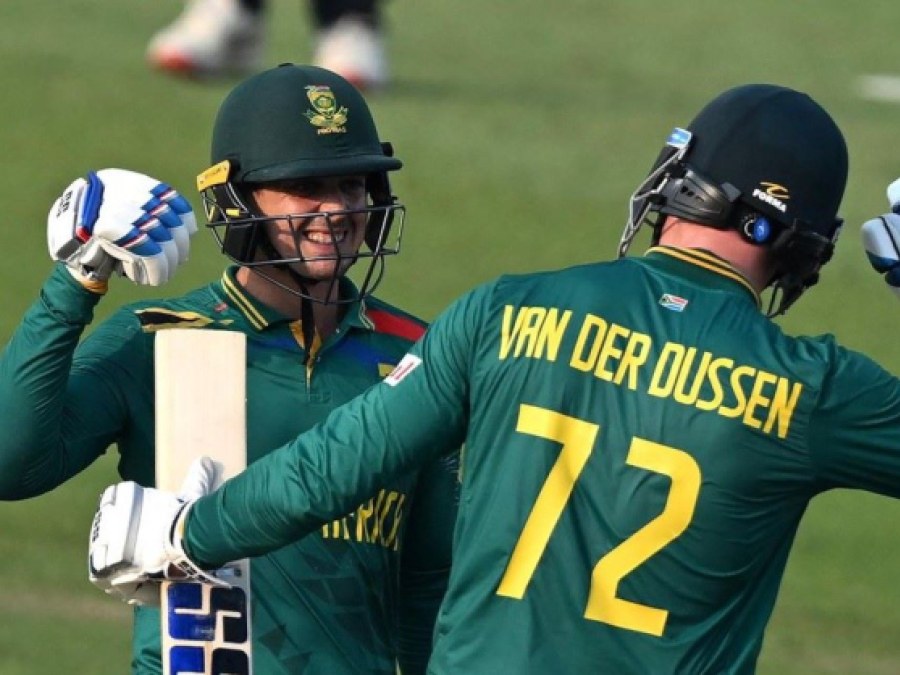
-
Category
-
Submitted By
-
06Dec, 2023
Johannesburg - Cricket South Africa (CSA) has unveiled the highly anticipated Proteas squads set to clash against India in a blockbuster all-format series, known as the Freedom Series, slated from 10th December to 7th January.
The high-stakes tour encompasses three KFC T20 Internationals (T20Is), three Betway One-Day Internationals (ODIs), and two Betway Test matches, promising an action-packed battle between the cricketing giants.
Excitingly, the squads feature fresh talent and strategic inclusions. Western Province's rising stars Mihlali Mpongwana, David Bedingham, and Nandre Burger have received their maiden call-ups to the national setup. Burger's sensational all-round performances this season earned him spots in all three squads, while Bedingham earned his place in the Test squad. Mpongwana's stellar showing in the CSA Division 1 One-Day Cup solidified his spot in the ODI squad after a standout performance in October's final against North West Dragons.
Adding more firepower, Dafabet Warriors' Tristan Stubbs makes his Test squad debut, showcasing his prowess with an impressive 130 against DP World Lions in the recent CSA 4-Day Domestic Series.
The return of Province's wicket-keeper Kyle Verreynne bolsters the ODI and Test squads. Verreynne's stellar performances in domestic competitions, including leading Province to the One-Day Cup title and a splendid show in the four-day competition, secured his place.
Key exclusions, including ODI captain Temba Bavuma and Kagiso Rabada, from the white-ball leg aim to prioritize red-ball cricket, focusing on the upcoming Test series. This strategic move paves the way for new talents to shine on the international stage.
However, the absence of Momentum Multiply Titans' fast bowler Lizaad Williams due to a groin strain casts a shadow over the team's preparations. His fitness will be assessed further this week. Meanwhile, Anrich Nortje and Wayne Parnell continue their rehabilitation, ruled out due to lower back stress fracture and a left shoulder injury, respectively.
The Proteas T20I squad boasts talent with Aiden Markram leading the team, featuring a formidable lineup including Ottniel Baartman, Matthew Breetzke, and the seasoned David Miller, among others. The ODI squad, led by Markram, showcases a blend of experience and fresh talent with the likes of Reeza Hendricks and Rassie van der Dussen.
Test head coach Shukri Conrad expressed confidence in the near full-strength Test squad, aiming for a strong start in the new ICC World Test Championship cycle against India in South Africa.
As the excitement builds for this epic showdown, the tour itinerary promises thrilling encounters across various iconic cricketing venues. The series kicks off in Durban on 10th December, setting the stage for a riveting battle between these cricketing powerhouses.
The Proteas gear up to defend their pride on home soil against a formidable Indian team in a series anticipated to deliver enthralling cricketing action, setting the stage for a memorable clash between bat and ball.
Tour itinerary
KFC T20I Series
Sunday, 10 December
South Africa vs India - Hollywoodbets Kingsmead Stadium, Durban
Tuesday, 12 December
South Africa vs India – Dafabet St George’s Park, Gqeberha
Thursday, 14 December
South Africa vs India - DP World Wanderers Stadium, Johannesburg
Betway ODI Series
Sunday, 17 December - Betway Pink Day
South Africa vs India - DP World Wanderers Stadium, Johannesburg
Tuesday, 19 December
South Africa vs India – Dafabet St George’s Park, Gqeberha
Thursday, 21 December
South Africa vs India - Boland Park, Paarl
Betway Test Series
26 December – 30 December
South Africa vs India - SuperSport Park, Centurion
03 January – 07 January
South Africa vs India - Newlands Cricket Ground, Cape Town
[Submitted by Kevin Rademeyer]
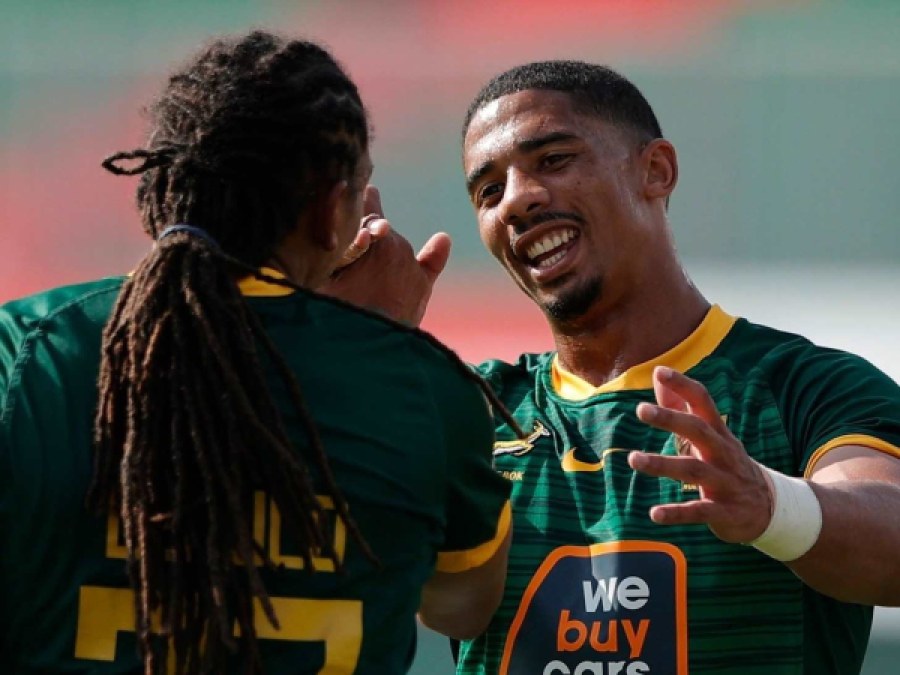
-
Category
-
Submitted By
-
06Dec, 2023
The Sevens Stadium in Dubai bore witness to an electrifying start as Australia's women and South Africa's men emerged triumphant in the HSBC SVNS 2024, setting the tone for World Rugby's dynamic celebration of rugby sevens.
In an intense showdown, South Africa's Blitzboks claimed their fifth consecutive Emirates Dubai 7s title by defeating a resilient Argentina 12-7. This victory equaled the record for the most successive titles at a single location, marking Argentina's finest performance in Dubai despite settling for silver.
The women's final showcased a gripping battle between the world's top two teams. Australia, in a rematch of last year's final, halted New Zealand's astounding 41-match winning streak with a 26-19 victory, securing their fourth consecutive Dubai title in a high-voltage kickoff to HSBC SVNS 2024.
Teagan Levi's pivotal tries, coupled with Maddison Levi breaking her own tournament try record, propelled Australia to victory. The game unfolded at an astounding pace, featuring Bienne Tarita's early try within seconds and a formidable response from the Black Ferns Sevens' Jorja Miller with a stunning hat-trick, before Maddison Levi sealed the win in the dying moments.
Reflecting on the match, Australia's captain Charlotte Caslick praised Maddison Levi's stellar performance, emphasizing the team's strategy to retain possession against the formidable New Zealand side, known for their attacking prowess.
On the path to the final, New Zealand showcased their dominance by defeating Brazil and Canada in gripping encounters, while Australia secured wins against the USA and France before claiming the championship.
The men's final witnessed South Africa edging out Argentina 12-7 in a tense battle. Impi Visser and Shilton van Wyk's crucial tries, combined with Argentina's valiant efforts, culminated in a tightly contested showdown. Despite a late resurgence from Argentina's Matias Osadczuk, South Africa held firm to secure the title.
South Africa's acting head coach, Philip Snyman, lauded his squad's remarkable performances, emphasizing their commitment and pride in the Springbok Sevens jersey.
With the series now heading to South Africa, fans eagerly anticipate the forthcoming tournament in Cape Town, hoping for another stellar performance from the reigning champions.
The event's pool draw for the upcoming HSBC SVNS in Cape Town produced exciting matchups, building anticipation among fans for another exhilarating display of world-class rugby sevens.
As the HSBC SVNS extravaganza continues, featuring pulsating rugby sevens action alongside live music acts and vibrant entertainment, fans are urged not to miss out on the upcoming Cape Town event, set to deliver yet another thrilling display of top-tier rugby action.
Tickets for the next round in Cape Town on 9-10 December are available from only R150, offering an unmissable experience for rugby enthusiasts and sports lovers alike.
[Submitted by Kevin Rademeyer]

-
Category
-
Submitted By
-
28Nov, 2023
Big Concerts announced that the celebrated, multi-award-winning artist and Grammy nominee, James Blunt, will be gracing South African shores next year as part of his highly anticipated tour promoting his latest sensational album, "Who We Used To Be." Accompanied by his band, Blunt is set to captivate audiences at the Grand Arena, GrandWest on Thursday, 12 September, and at SunBet Arena, Time Square on Saturday, 14 September. This tour is presented in association with 947 and KFM 94.5.
The exclusive Discovery Bank pre-sale is scheduled to commence at 09h00 on Wednesday, 29 November, accessible via www.ticketmaster.co.za, and will continue until 08h59 on Friday, 1 December. General public ticket sales will officially open at 09h00 on Friday, 1 December 2023, exclusively through Ticketmaster.co.za.
Blunt's latest album, "Who We Used To Be," has already received accolades for its brilliance and infectious tunes. Expressing his excitement for the tour, James said, "I cannot find the words to say how excited I am to get back out on the road again on tour in 2024. My new album was incredibly fun to write and record, and some of the new songs will undoubtedly get you up on your feet and dancing again. I'm looking forward to crowd surfing at a venue near you!"
The album's debut single, the upbeat anthem 'Beside You,' accompanied by a captivating video directed by Craig Bingham, pays homage to James' past, depicting encounters with versions of himself throughout his life. As he embraces the personas of his former self, the video reflects his journey forward.
"Who We Used To Be" marks James Blunt's first studio album since the highly acclaimed top 3 charting album "Once Upon A Mind" in 2019. For this project, Blunt collaborated with various producers, including Jonny Coffer, Red Triangle, Jack & Coke, and Steve Robson. His recent compilation of greatest hits, "The Stars Beneath My Feet," achieved Gold status by selling over 100,000 copies.
For comprehensive tour and ticket details, visit www.bigconcerts.co.za.
James Blunt "Who We Used To Be" Tour Details:
Cape Town
Date: 12 September 2024
Venue: Grand Arena, GrandWest, Cape Town
Ticket Sales: Exclusively available from Ticketmaster (www.ticketmaster.co.za) starting at 09H00 on Friday, 1 December.
Pretoria
Date: 14 September 2024
Venue: SunBet Arena, Time Square, Pretoria
Ticket Sales: Exclusively available from Ticketmaster (www.ticketmaster.co.za) starting at 09H00 on Friday, 1 December.
Prepare to immerse yourself in an unforgettable musical journey as James Blunt brings his enchanting melodies and chart-topping hits to South Africa in 2024!
[Submitted by Kevin Rademeyer]

-
Category
-
Submitted By
-
28Nov, 2023
Renowned global comedian Jimmy Carr has exciting news for South African comedy enthusiasts, announcing two dates for his highly acclaimed "Terribly Funny" stand-up comedy tour to be held in 2024. The shows, in partnership with 947 and KFM 94.5, are set to kick off on Saturday, 2 March at the SunBet Arena, Time Square in Pretoria and conclude on Sunday, 3 March 2024 at the Grand Arena, GrandWest in Cape Town.
Ticket sales for the Discovery Bank pre-sale are scheduled to commence at 09h00 on Wednesday, 29 November, exclusively through ticketmaster.co.za, running until 08h59 on Friday, 1 December. General public ticket sales will then open at 09h00 on Friday, 1 December 2023, available exclusively through ticketmaster.co.za.
Jimmy Carr's extensive international tours have spanned over forty countries, with his previous tour, "Best Of Ultimate Gold Greatest Hits," achieving a global ticket sale of over 480,000. The current "Terribly Funny" show has surpassed this figure, extending its success into 2023 and now adding South Africa to its 2024 itinerary, following shows in Australia, New Zealand, Canada, and the USA.
About Jimmy Carr:
Jimmy Carr is a prominent figure in UK television, notably recognized for hosting Channel 4's acclaimed shows such as "8 Out Of 10 Cats," "8 Out Of 10 Cats Does Countdown," and "Big Fat Quiz Of The Year." He has also graced Comedy Central's "Roast Battle UK" and "Your Face Or Mine." Carr is a regular panelist on top-rated shows including QI and A League Of Their Own. His illustrious career includes multiple appearances at The Royal Variety Performance, and he currently serves as a judge on the hit BBC1 entertainment series "I Can See Your Voice" and hosts Channel 4's latest game show, "I Literally Just Told You."
Internationally, Jimmy Carr has made a mark in North America as the first UK comedian to secure a stand-up deal with Netflix in 2015. He released three specials on the platform, including "Funny Business" (2016), "Best Of Ultimate Gold Greatest Hits" (2017), and "His Dark Material" (2021), the latter being Netflix's most watched stand-up comedy special in the UK for that year. Carr has also presented and executive-produced the original panel show format, "The Fix," for Netflix and made multiple guest appearances on esteemed US talk shows such as The Tonight Show, The Late, Late Show, and Late Night With Conan O'Brien. His consistent performances at the Montreal Just For Laughs Comedy Festival since 2003 have made him a standout UK act with the most appearances in that timeframe.
Before venturing into streaming, Jimmy Carr established himself as one of the best-selling comedians in the DVD market, with his eight titles collectively selling over 1.2 million copies. These shows are now available on Jimmy's YouTube channel, boasting over 758,000 subscribers and 210 million views since its inception in 2018. Carr's literary contributions include co-writing "The Naked Jape: Uncovering the Hidden World of Jokes" in 2007 and his highly anticipated memoir, "Before & Laughter," which debuted on The Sunday Times Bestsellers list in September 2021.
Important Notes:
Carr's current show features jokes on various topics, some of which may touch upon sensitive subjects. He clarifies that these jokes are not indicative of the actual events and urges patrons to exercise discretion when attending the show.
Fans are strongly cautioned against purchasing tickets from Viagogo. Tickets obtained from these sources are unlawfully resold at inflated prices and may result in denied entry to the venue without refund.
For comprehensive tour and ticket information, please visit www.bigconcerts.co.za.
Jimmy Carr "Terribly Funny" Tour Details:
Pretoria
Date: 2 March 2024
Venue: SunBet Arena, Time Square, Pretoria
Ticket Sales: Exclusively available from Ticketmaster (www.ticketmaster.co.za) starting at 09H00 on Friday, 1 December.
Cape Town
Date: 3 March 2024
Venue: Grand Arena, GrandWest, Cape Town
Ticket Sales: Exclusively available from Ticketmaster (www.ticketmaster.co.za) starting at 09H00 on Friday, 1 December.
Attendees under the age of 16 are advised that the show may contain content unsuitable for their age group.
Prepare for an evening of unparalleled laughter and entertainment with Jimmy Carr's "Terribly Funny" tour hitting South African shores in 2024!
[Submitted by Kevin Rademeyer]
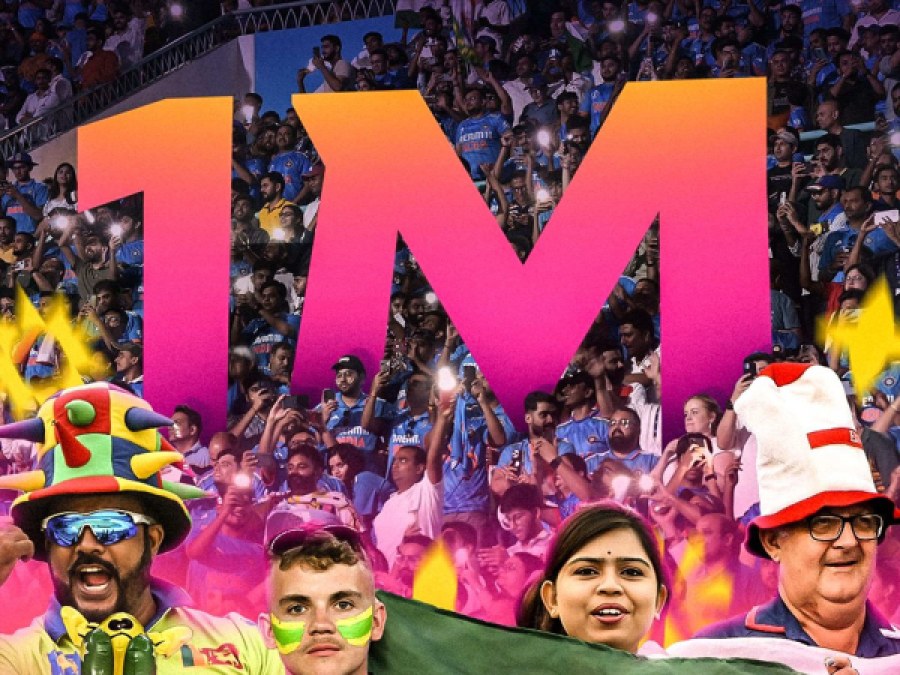
-
Category
-
Submitted By
-
22Nov, 2023
Amidst a thrilling journey encompassing six pivotal games, the fervor of the audience surged, catapulting spectator figures beyond the illustrious one million mark. The crescendo of this sporting spectacle reached its zenith as the World Cup culminated in a breathtaking showdown at the grandeur of the Narendra Modi Stadium in Ahmedabad on a vibrant Sunday.
Spanning from the 5th of October to the 19th of November, this illustrious event vowed to immerse fans within the pulsating heart of the action. The inauguration witnessed an astounding spectacle, marking the highest attendance for a Men’s Cricket World Cup opening match, igniting the passion as England clashed with New Zealand in a riveting encounter, reminiscent of the captivating 2019 final. Subsequently, the historic clash between India and Pakistan in the ICC World Cup history further intensified the fervor as fans thronged the stadiums on the memorable 14th of October.
Surpassing a staggering milestone, the figure of over 1.25 million fervent fans etched a new zenith in cricket's annals, eclipsing the attendance records of all previous ICC events. Notably, the ICC Men’s Cricket World Cup 2015 held in Australia and New Zealand gathered 1,016,420 spectators, while the 2019 edition in England and Wales witnessed 752,000 enthusiasts streaming through the turnstiles.
The 13th edition of the Men’s Cricket World Cup, hosted in India, not only soared past these figures but also shattered numerous records in broadcast and digital viewership. This triumphant feat underlines the sport's global eminence and the ever-burgeoning adoration among aficionados.
Chris Tetley, the illustrious ICC Head of Events, remarked, "The resplendent journey of the ICC Men’s Cricket World Cup 2023 has transcended all expectations, illuminating the finest facets of the game and kindling an ardent passion in the hearts of millions across the globe. The staggering attendance stands as a testament to cricket’s timeless allure and the perpetual excitement encapsulated within the ODI format. This event has not merely entertained but has unified cricket enthusiasts worldwide, fostering an unparalleled celebration of this cherished sport."
"ICC events serve as a cornerstone in nurturing the growth of cricket, inspiring legions of future fans and players across the globe. We extend our heartfelt gratitude to the fervent fans whose unwavering support and enthusiasm rendered the ICC Men’s Cricket World Cup 2023 an unequivocal triumph. We eagerly anticipate crafting more enthralling experiences in future ICC events for the delight of everyone," Tetley concluded, brimming with anticipation for the adventures yet to come.
[Submitted by Kevin Rademeyer]

-
Category
-
Submitted By
-
22Nov, 2023
In a grand proclamation, the illustrious City of Cape Town proudly steps into the limelight, announced as the prestigious Host City for the forthcoming Betway SA20 Final, slated for the resplendent date of 10th February 2024. This momentous partnership between the City and the tournament promises to unfurl the vibrant tapestry of Cape Town's allure to a global audience, casting its magnetic charm in the corridors of tourism hotspots worldwide.
Adorned with natural beauty and steeped in cultural richness, the iconic Newlands stadium emerges as the sacred ground where the champions of Betway SA20 Season 2 will be anointed on the grand stage of the Final. Not merely content with hosting the Final, Newlands sets the scene for the inaugural Qualifier on 6th February. Meanwhile, the Wanderers stands ready to host two exhilarating back-to-back knockout clashes - the thrilling Eliminator on 7th February and the gripping Qualifier 2 on 8th February.
The City of Cape Town, now anointed as the official 'Host City – Final' partner, embarks on an unprecedented journey to amplify its magnificence across the League's global network and vast audience.
Cape Town, an eminent gem in the treasure trove of global tourist destinations, captivates hearts with its heritage sites, iconic landmarks, diverse arts, cultural extravaganza, and pristine natural resources. A symphony of unparalleled offerings awaits within the city's embrace - an ensemble of experiences that cater to every discerning visitor.
"Merely 50 days away from the onset of this cricketing extravaganza, this marks a pivotal moment as we crown the City of Cape Town as our esteemed Host City for the Final, locking in our venues for the playoffs and Final," proclaimed the Betway SA20 League Commissioner, Graeme Smith. "Summer and cricket weave a timeless narrative, and with the January/February window secured annually, SA20 promises to be the ultimate destination. Cape Town, a global hotspot for summer escapades, has proved its mettle by hosting distinguished events like the Women’s T20 Cricket World Cup Final, the Volvo Ocean Race, the URC Final, the Cape Epic, and more. The city pulsates with a unique energy, boasting iconic locales and a plethora of entertainment options. We eagerly anticipate the city setting the stage for a world-class Final on the 10th of February 2024."
A bastion of cricketing lore, the Wanderers has witnessed iconic clashes etched in the annals of South African cricket. It has been the arena for historic encounters, including the famed 438 game, the 2003 ICC Cricket World Cup Final, and the scintillating 2023 Betway SA20 Final.
Nestled beneath the towering majesty of the mountains, Newlands, with its famed Oaks embankment, resounding Railway Stand, the tantalizing aroma wafting from the nearby brewery, and the ethereal sunsets, transforms each match into a timeless spectacle.
"As the City of Cape Town, we embark on an exhilarating partnership with Betway SA20 to showcase our resplendent city during their Season 2 playoffs and Final. We take pride in having been chosen by the Mumbai Indians, the joint-most successful IPL team, as the home for their SA20 franchise. Securing Newlands as the Final's venue augurs well for MI Cape Town in Season 2," affirmed the Deputy Mayor, Eddie Andrews.
"The electrifying buzz in the city during Season 1, from avid cricket enthusiasts to casual sports aficionados, was palpable. Moreover, the economic and environmental impact of the League resonates with our vision of enhancing the lives of our citizens. We eagerly anticipate collaborating with SA20 to showcase spectacular cricketing action and the splendor of our city throughout the tournament, culminating in the playoffs and the grand final at Newlands."
In an exciting addition to Season 2, the playoffs will witness the top teams vying for supremacy - Qualifier 1, the Eliminator, and Qualifier 2, paving the way for an epic championship clash in the Final on the 10th of February.
With just 50 days to go before the commencement of this enthralling cricketing fiesta, the anticipation builds as the world's elite cricketers prepare for a month brimming with entertainment, top-notch cricket, and everlasting memories.
The defending champions, Sunrisers Eastern Cape, shall commence their title defense with a riveting encounter against the Joburg Super Kings in Gqeberha on the 10th of January, unleashing cricket fever across South Africa's premier stadiums throughout the month.
Tickets for the playoffs and the Final will be available for purchase starting from the 8th of January on www.SA20.co.za. Stay tuned to Betway SA20 and the City of Cape Town's social media platforms to seize your chance to be part of the electrifying atmosphere at these matches. Tickets for the round-robin matches are presently accessible on www.SA20.co.za.
[Submitted by Kevin Rademeyer]















